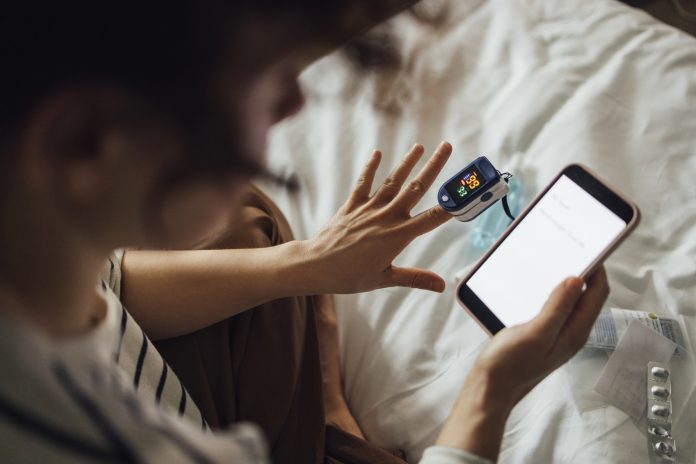Bryn Sage, CEO of Inhealthcare, provides a detailed and optimistic view of remote monitoring technology for the future of our health service
It hardly needs to be stated that the NHS is under immense pressure. But look beyond the negative headlines, and you will find some grounds for optimism about the future of our health service – and our broader economy.
First, the government has a vision to create one of the world’s most exciting health innovation systems. In a recent keynote speech, the Health Minister Lord Markham outlined his plan to scale digital technologies across the NHS and transform how we deliver health and care access. He said: “The process will support the emerging digital health technology market, while providing value for money for the NHS. It will help to consolidate the buying points, streamline market access for industry and will also provide opportunity to leverage the buying power of the NHS.” (1)
This fits into the Prime Minister’s vision to cement the UK’s status as a science and technology superpower by 2030, using the UK tech industry as one of the engines for economic growth. As a former businessman, Lord Markham said he had experienced first-hand the challenges of doing business with the NHS and was committed to:
“removing barriers and ensuring our health service remains on the frontline of innovation”. (1)
Second, the digital health industry now attracts billions of dollars in investment. The global market was worth just $1 billion in 2010. By 2022, it had grown to more than $23 billion. This means entrepreneurs can secure funding to turn the latest research and innovation into new products and services for the NHS and healthcare systems worldwide.
Third, the remote monitoring technology that can do so much to free up capacity within primary and secondary care is already here. Remote monitoring came of age during the pandemic when appointments went online en masse. Yet there are huge benefits still to be realised. We estimate that digitising routine services for long-term conditions could release tens of millions of appointments annually and improve health outcomes.
The impact of remote monitoring on the NHS
It’s never as easy as one-two-three, but as a leading provider, we have plenty of real-world examples of how remote monitoring makes a difference to the NHS today.
The Surrey Heartlands Health and Care Partnership is working with Inhealthcare to target and support nearly 126,000 people estimated to be living with poorly controlled diagnosed or undiagnosed hypertension. Blood Pressure @ Home enables patients to monitor their blood pressure from the comfort of their homes without needing to visit their GP practice. They take their own readings and supply these via a choice of digitally inclusive communication channels – app, email, text message, or phone call – if any fall out of range, clinicians are alerted and can intervene early.
Dr Jagjit Rai, a GP in Stanwell, said: “We have demonstrated that patients are happy to monitor their condition from home, and when they do, they not only develop a better understanding but feel empowered to manage it better through remembering to take their medication and making lifestyle choices. This will lead to better preventative care for our patients and reduce the burden on GP practices as we receive the patients’ results electronically rather than having to see them each time.” (2)
Remote monitoring technology in Scotland
Scotland is becoming an international leader in using remote monitoring technology to help people safely manage their health needs at home without having to attend clinics in person. The nation has launched one of Europe’s most extensive remote monitoring services for high blood pressure. Working with the NHS and Scottish Government, Inhealthcare has developed and expanded many national pathways for long-term conditions, including asthma, chronic obstructive pulmonary disease, and heart failure.
The technology is tried and tested to deliver Scotland’s pathway for COVID patients. An evaluation for the Scottish Government found it improved access to NHS services and could be safely rolled out. The study also found that patients had positive experiences of using the system, and staff felt supported and engaged. It also reduced health inequalities, with more than twice as many people from disadvantaged areas utilising the service.
The endorsement of virtual wards to allow patients to get hospital-level care at home illustrates the growing confidence in remote monitoring for supporting those with more serious conditions.
New remote care service in In Dorset
In Dorset, patients undergoing chemotherapy and immunotherapy treatment are piloting a new remote care service that monitors their progress and helps them manage symptoms at home. Inhealthcare has partnered with NHS Dorset to launch Oncology Monitoring @ Home, which aims to improve patient safety with timely self-care advice and early access to hospital if required.
Dr Amélie Harle, Oncology Consultant, said: “This innovative system designed by patients and oncology teams together, should provide patients with early advice at the onset of symptoms to empower a patient to safely manage milder symptoms at home or, when symptoms are more significant to seek urgent advice from the Acute Oncology Hotline Service.” (3)
More examples of remote monitoring technology
Elsewhere, the NHS in London has launched a new tech-enabled programme to tackle the significant disparity in physical health outcomes for individuals living with severe mental illness (SMI). People with illnesses such as bipolar disorder and schizophrenia die 15-20 years earlier than the general population, mainly due to preventable or treatable physical health problems.
The North West London Integrated Care System has partnered with Inhealthcare to extend annual physical health check pathways to reach more SMI patients in community locations, introduce remote monitoring technology to support the pathways and improve data-sharing between different parts of the primary and secondary care system.
These are just a few examples of how Inhealthcare, a UK tech company, is helping the NHS to address some of the challenges facing the health and care system. The government’s plans to remove barriers for innovators should benefit patient care, the health service and the UK tech sector, help attract more investment into the UK and renew pride in our 75-year-old national institution. Grounds for optimism indeed.
References
- https://www.gov.uk/government/speeches/supporting-innovation-and-adoption-of-technology-across-the-nhs
- https://www.inhealthcare.co.uk/press/inhealthcare-leads-the-way-in-remote-monitoring-support/
- https://nhsdorset.nhs.uk/patients-undergoing-chemotherapy-or-immunotherapy-treatment-in-dorset-to-be-offered-an-oncology-monitoring-home-service/
Contributor Details
More About Stakeholder
-
Inhealthcare virtual wards and remote patient monitoring
With over 10 years of experience of working with the NHS, our digital healthcare technology has been tried, tested and proven – and now, over three million patients across the UK use it.
















